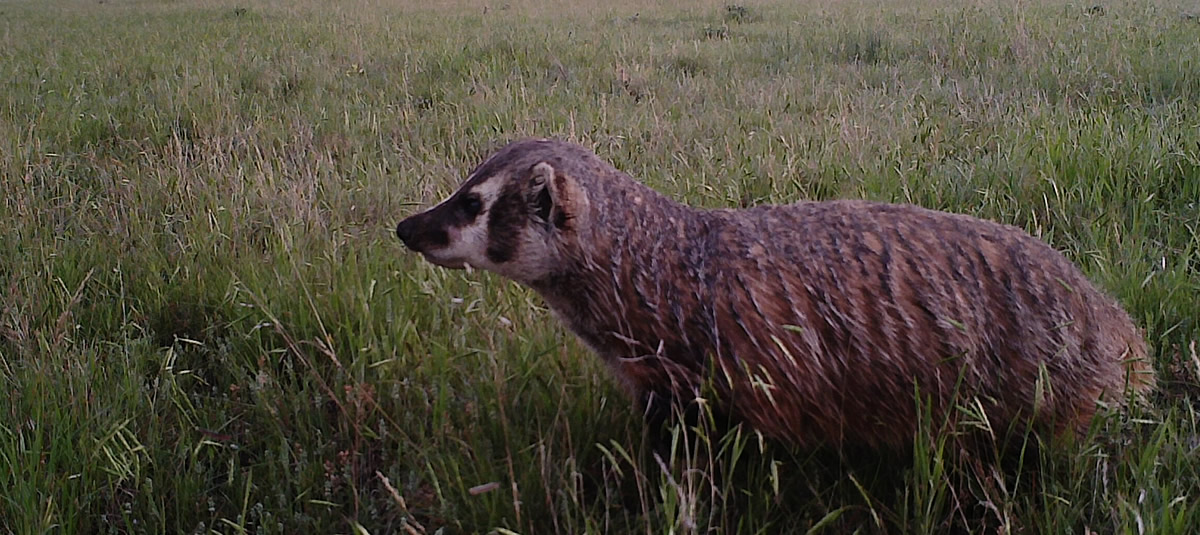The Challenge
Sagebrush and shortgrass prairie habitats are becoming increasingly degraded and fragmented due to multiple influences. These include direct conversion to cropland, urbanization, infrastructure development (roads, power lines, etc.), damage from wildfires, invasion by non-native plants and animals, inappropriate grazing management, and the development of both non-renewable energy (coal, oil, natural gas) and renewable energy sources (wind farms).
The Strategy

Because of the mixed surface and sub-surface ownership of this region, and in light of the multiple uses for which it is valued, the Association recognizes that effective conservation requires consistent and compatible management across federal, private, and state properties. The Association’s conservation Strategy offers property owners—including livestock/agricultural producers, energy companies, and government agencies—an opportunity to voluntarily identify and implement coordinated and collaborative conservation measures on the lands they control. This incentives-based strategy is designed to purposefully focus conservation efforts in the areas within the region where they are most likely to be of durable conservation benefit. To achieve this, Association members are invited to enroll properties they own or lease into three inter-related programs.
Private property can be enrolled into the Candidate Conservation Agreement with Assurances. Property with a federal nexus (federal surface ownership or lands for which a federal lease, contract or permit is held) can be enrolled in the Candidate Conservation Agreement. Lands associated with foreseeable future development of energy resources (i.e. lands designated for future coal mining or similar oil and gas areas) can be covered by the Conservation Agreement. This over-arching approach will allow for much greater consistency and strategic focus across the landscape. For example, a rancher with privately owned lands and a federal grazing lease would implement consistent conservation measures across both CCAA and CCA properties. Similarly, an energy company would be able to integrate management across both private lands and federal leases.

Participating members will select and implement conservation measures that address identified threats to the species within their enrolled acres, with an emphasis on measures that address habitat fragmentation and destruction. Required conservation measures are determined in proportion to the number of enrolled acres. The Association will work with members to ensure that measures implemented are balanced appropriately between the two ecotypes under conservation.
In order to maximize the conservation benefits this program, members may direct their conservation measures to properties other than their own. For example, coal mines may enroll properties scheduled for future coal production but direct their conservation efforts to improve and protect habitats on other lands, thus providing strategic, long term benefits for the covered species where it will do the most good.
In return for their participation in this conservation strategy, enrolled members receive significant assurances (CCAA) or certainty (CCA or CA) that the conservation measures they have voluntarily agreed to employ will be deemed sufficient if one of the covered species is listed as endangered, and that additional land use restrictions will not be required.
Timeline
- May 18, 1999 – A group of 16 interested ranchers met at Earl and Jewell Reed’s house to discuss issues with black-tailed prairie dogs.
- June 25, 1999 – The group met with FWS in Denver to see if they “would be receptive to Landowners proposing their own habitat conservation plan” consisting of baseline inventory data collection, monitoring, financing, etc.
- Summer 2000 – FWS dedicated funds for preparation of a CCAA covering black-footed ferret, black-tailed prairie dog, mountain plover, swift fox, burrowing owl, ferruginous hawk, sage grouse, and Ute ladies’ tresses orchid.
- By late 2001 – The Association realized they didn’t have enough information to complete the required documentation.
- Spring 2002 – FWS funds were re-programmed to assist with data collection and preparation of the ecosystem classification. Work began on an in-depth ecological assessment covering approximately 1 million acres in northeast Wyoming later that summer.
- Fall of 2007 – The ecological assessment was nearing completion and the Association contacted FWS to discuss what species should be included in an initial conservation Strategy and what typical agreement lengths should be.
- Fall 2008 – The ecological assessment was completed and final documents were received.
- September 1, 2009 – The Association met with FWS Wyoming Field Office staff and work began on the conservation Strategy.
- February 2010 – The Association began developing conservation measures for the eight covered species. This process ultimately allowed over 30 state and federal agencies, environmental groups, and academia/research entities to provide comments.
- December 2, 2011 – The Association met with FWS regional office staff and solicitors.
- July 23, 2013 – The Association submitted the final draft of the conservation Strategy (integrated CCAA/CCA/CA) to the FWS.
- May 16, 2014 – An Interagency Memorandum of Understanding (MOU) was finalized by the Association, FWS, BLM, Forest Service, and Wyoming Game & Fish Department. This MOU defined the responsibilities of each party and established a Conservation Advisory Committee to advise the Association Board.
- July 2015 – Environmental Assessment completed and submitted to FWS regional office staff and solicitors for review.
- January 29, 2016 – FWS, along with BLM and Forest Service as cooperating agencies, finish an initial review of the draft EA.
- November 2016 – Final review of the Strategy and associated EA completed by FWS and the solicitors.
- November 28, 2016 – The conservation Strategy and associated EA were published in the Federal Register and available for public comment.
- December 28, 2016 – Public comment ended and meetings with FWS, along with BLM and Forest Service as cooperating agencies, were held in early 2017 to address public comments.
- March 18, 2017 – The final conservation strategy documents were signed after almost 18 years of work and over 840 official meetings.

